Articles
The Saga of Jack Dempsey’s “Loaded” Gloves: Part 1
This is the first of a two part series on the ongoing question of whether Jack Dempsey’s gloves were loaded when he fought Jess Willard in 1919.
The fight game’s underbelly is full of unanswered accusations and allegations. In some cases, we want the truth. In others, we’d rather not know. The question of whether Jack Dempsey’s gloves were loaded with cement when he savagely knocked out Jess Willard for the heavyweight title is one of the latter. The Manassa Mauler was the most popular athlete in the era of Babe Ruth and Red Grange and the elder statesman of boxing during the era of Muhammad Ali. Yet his victory over Willard on that hot Ohio day in 1919 is such an outlier wrought with scandal that fans will always wonder if there is more to this story.
Since the reign of John L. Sullivan, the linear heavyweight title and its various incarnations from the four sanctioning bodies has change hands more than 100 times inside and outside of the ring. In only four instances has that transfer of power come from vicious knockouts in the first three rounds. One was southpaw Corrie Sanders’ second-round knockout of a maturing Wladimir Klitschko in 2003; another was Mike Tyson’s win over an over-matched Trevor Berbick in 1986; and the third was George Foreman’s win over Joe Frazier in 1973. The fourth was Dempsey’s win over Willard, and it was the only one where the victor overcame such a size advantage to knock out his opponent. Willard stood 6’6”, weighed 243 pounds and had an 83½-inch reach. Dempsey was 6’2”, weighed 196 pounds and had a 78-inch reach. The win was even more shocking because Dempsey had just been another hand-to-mouth contender out west only 18 months earlier.
Answering the call of Mormon missionaries, Dempsey’s parents had moved from poor rural Logan County, West Virginia, to Manassa, Colorado. There, William Harrison Dempsey was born on June 24, 1895, the 9th of 11 children. Even at a young age, he carried the virtues that Americans wish of all of their fighters. He loved to fight, would confront any bully and as Manassan Troy Soward described, “was tough as a pine knot. … They wasn’t any of ‘em that run it over that boy.” Yet he was also a gentle, easygoing boy, who became uncomfortable at the site of anyone else’s blood or injury.
Even if carnage made him squeamish, it was ingrained his head that the only way to escape poverty was with his fists. After graduating from 8th grade at the age of 15, his teacher told him, “when you get to be a man, you’ll live in a log house and have a straw shed for a barn.”
He fought his first professional fight at the age of 19 under the name “Young Dempsey” but went with “Jack” in honor of the great middleweight “Nonpareil Jack Dempsey” at the urging of his older brothers. Even early in his career, Dempsey had already developed his crouch stance and his full-speed attack at the opening bell.
But he was raw… and he was poor. He rode the rails (hobo slang for illegally hiding and traveling in train freight cars) to make it to fights and odd jobs, never seeming to gain any traction. A trip to New York City in 1916 to gain attention was cut short because he broke two ribs and had to venture west to make money. Back in Salt Lake City, he fell in love with and married a piano-playing prostitute named Maxine Cates, who was 15 years older than him.
The two had a casual marriage with Dempsey traveling for fights and Cates doing what she had to do to make money. On February 13, 1917, in Murray, Utah, Dempsey hit the lowest point of his career when Fireman Jim Flynn knocked him out in the first round. For a pugilist of his caliber, the loss was such an anomaly that accusations of him throwing the fight became rampant.
Dempsey moved to Oakland minus Cates and got a job in a shipyard. He fought a few bouts, which were hard to get because of his sullied reputation and performed sluggishly in most of them. His career was in dire straits.
Then one night, he went to a saloon near the shipyard and saw a promoter named Jack Kearns being threatened by one of his fighters. Vince Nelson, a heavyweight who was half in the bag, was upset that Kearns had not taken him with his other fighters on a barnstorming tour of Australia. Nelson threw a punch at Kearns, who avoided it and responded with a shot of his own. A barroom brawl ensued.
“It was a mess,” recalled Kearns. “This Dempsey was standing on the edge and I heard him say, ‘I heard this conversation. I’ve been wantin’ to take care of this guy,’ meaning Nelson, and he came charging in.”
Dempsey took care of him with a few punches. When Kearns learned that his savior had actually beaten one his fighters, Joe Bonds, a year earlier, he discussed the possibility of managing him. Dempsey thanked him, but said he was comfortable with his job in the shipyard. A few months later, however, he had moved back to Salt Lake City and Kearns wired with an opportunity to fight Willie Meehan in Oakland. Dempsey accepted and his life was changed forever.
Before becoming a fight manager, Kearns (whose real name was Leo John McKernan) had tried many occupations, including gold mining in the Klondike and smuggling illegal Chinese immigrants into the United States. He had also briefly tried his luck as a middleweight boxer, but found his niche as a manager. In Dempsey, he had the perfect student. His punching power and style was already formidable, but this was one fighter who for a long while did everything he said.
Everything.
So trusting of Kearns was Dempsey that he would direct all questions to Kearns, saying, “He’s the doctor,” thus creating the promoter’s famous nickname. At Kearns’ insistence on both counts, Dempsey broke off the relationship with Cates, but then also listed her as a dependent when filing for a draft exemption during World War I. This led to Dempsey being tried for evading the draft in 1920, but a jury acquitted him within ten minutes of deliberation.
But in the ring, Kearns continually steered him in the right direction. Although the bout with Meehan ended in a draw, Dempsey had found his groove as a fighter. Over the next 15 months, he fought 26 times, his only loss being a 4-round decision to Meehan. Along the way, he avenged his loss to Flynn and dispatched virtually every contender in the heavyweight division. Dempsey’s work in the ring and Kearns’ efforts out of it were making the elusive title bout with Willard possible.
The Pottawatomie Giant was perhaps the most uninspiring heavyweight champion of all time. Quiet and bland, he did not take up professional boxing until he was 29, and only did then because he realized his size and frame would allow him to make money. He had never been knocked down, but had actually quit once in a match, telling the referee “I’m in no condition to fight.” Yet in 1915, he was still one of the strongest contenders in a weak heavyweight division and traveled to Havana, Cuba, to challenge Jack Johnson for his title. Willard finally knocked Johnson out in 26th-round of the scheduled 45-round fight, but that victory was tainted with claims by Johnson that he threw the bout.
Willard had defended his title only once, knocking out Frank Moran in 1916. Since then he had turned down all other fight offers. He tried to avoid facing Dempsey as well, but pressure from sportswriters forced him to relent. The two agreed to meet on July 4 in Toledo, with Willard being guaranteed $100,000 (about $13 million today), while Dempsey was guaranteed $27,500 (about $3.6 million). In the days leading up to the bout, Kearns tried to increase Dempsey’s purse, but promoter Tex Rickard denied his request.
Despite the 3-year layoff, Willard was still a 5-4 favorite going into the bout. Another significant set of odds was a 10-1 shot that Dempsey would knock Willard out in the first round. Kearns bet $10,000 on the latter.
Willard approached the fight like a cheap small businessman, hiring seconds in his corner who turned out to be inept at everything from managing a bout to wrapping hands. According to Kearns, he even asked for legal immunity in case he killed Dempsey, who later said, “I decided I wasn’t just fighting for $100,000. I was fighting for my life.”
Dempsey entered the ring on edge, even by his standards. He was known to tremble violently and sometimes wet his pants before bouts, his sole focus being on his opponent. A confident Willard turned to his seconds and said, “Let’s get this thing over.”
The bell rang for the first round and the two studied each other for about 30 seconds. Dempsey then feinted with his left, causing Willard to lower his guard and then nailed him with a left hook that shattered his cheekbone in 13 places. Willard went down and the challenger stood over him, a practice that was legal at the time.
The champion got up at the count of six and Dempsey put him back on the canvas. Three more times this happened and the bell for the end of the first round rang with Willard down and the referee’s count at seven.
Willard’s face was a bloody mess and the crowd screamed for the fight to be stopped. Kearns, thinking the champion was finished and trying to secure his $100,000, threw his arms around Dempsey and told him to leave the ring. Then referee Ollie Pecord told Kearns that Willard had not been counted out and that Dempsey had to reenter the ring or be disqualified. The champion was ready to continue.
“Willard is a game fellow,” Dempsey said after the fight. “I never handed out more punishment to anyone and have him come right back for more as Willard did today.”
The fight went on for two more rounds, with Dempsey knocking Willard down twice. The champion refused to answer the bell for the fourth, thus ceding his belt to the Manassa Mauler.
“It was no use to continue,” said Willard. “My strength left me in the first round.”
He was later said to have sat in his dressing room, repeatedly saying, “I have a farm in Kansas. I have a farm in Kansas.”
The level of punishment was unlike any seen in a heavyweight championship fight or in any of Dempsey’s bouts prior or since. As Damon Runyan described:
“The right side of Willard’s face was a pulp. The right eye of the fallen champion was completely hidden behind that bloody smear. His left eye peered over a lump of flesh in grotesque fashion.
“The great body of the giant was splotched with red patches. They were the aftermath of Dempsey’s gloves thumping there and giving back a hollow sound as they thumped. At the feet of the gargantuan pugilist was a dark spot which was slowly widening on the brown canvas as it was replenished by the drip-drip-drip of blood from the man’s wounds. He was flecked with blood from head to foot.”
Cries of foul began immediately after the bout. Bat Masterson, the legendary lawman who became boxing columnist for The Morning Telegraph in New York in his second career, was the most fearless accuser. He implied that Dempsey could have taped his hands with concrete-lined electrical tape (He was likely referring to nylon tape lined with Chatterton’s compound, a thick, stiff adhesive that was found in the precursors to modern electrical tape.). Masterson also wrote that something must have been askew because Dempsey had looked pitiful in some of his previous bouts and could not have destroyed Willard the way he did. However, any accusations by the ex-lawman must be juxtaposed with a contempt for Dempsey that stemmed from the fact that he was once managed back west by his old nemesis, Otto Floto. There were also rumors that Floto still owned a piece of the champ.
But at that moment, Dempsey had risen above poverty, the hard-scrabble life of a contender and the accusations of biased writers like Masterson. When asked what else he wanted to do with his life, he said, “I want to be a gentleman.”
And that he did. Dempsey fought some of the most financially lucrative fights of the 1920s on his way to becoming the most beloved sports figure of the first half of the 20th Century. By the 1960s, Dempsey was running his Manhattan restaurant and enjoying the twilight of his life… well above the questions surrounding the Willard fight. Then almost 45 years after the bout, Kearns reached from beyond the grave to pull him back into the muck.
Part 2 will cover the allegations by Jack “Doc” Kearns that he loaded Jack Dempsey’s gloves before the bout.
-

 Featured Articles4 weeks ago
Featured Articles4 weeks agoA Night of Mismatches Turns Topsy-Turvy at Mandalay Bay; Resendiz Shocks Plant
-

 Featured Articles2 weeks ago
Featured Articles2 weeks agoAvila Perspective, Chap. 330: Matchroom in New York plus the Latest on Canelo-Crawford
-
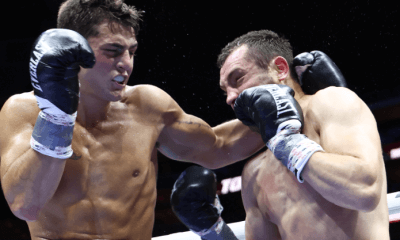
 Featured Articles1 week ago
Featured Articles1 week agoVito Mielnicki Jr Whitewashes Kamil Gardzielik Before the Home Folks in Newark
-
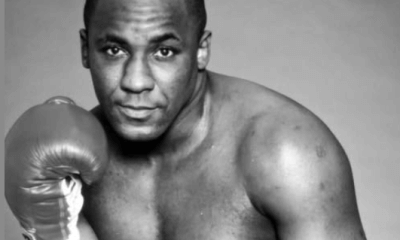
 Featured Articles4 weeks ago
Featured Articles4 weeks agoRemembering the Under-Appreciated “Body Snatcher” Mike McCallum, a Consummate Pro
-
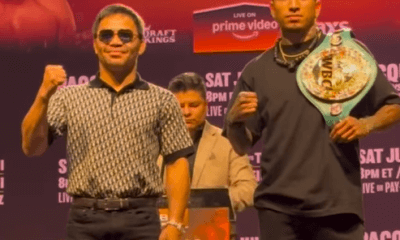
 Featured Articles4 weeks ago
Featured Articles4 weeks agoAvila Perspective, Chap 329: Pacquiao is Back, Fabio in England and More
-
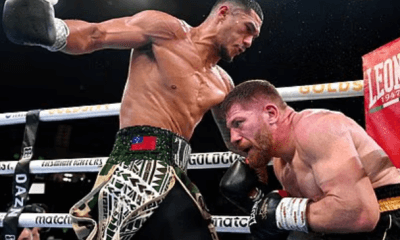
 Featured Articles3 weeks ago
Featured Articles3 weeks agoOpetaia and Nakatani Crush Overmatched Foes, Capping Off a Wild Boxing Weekend
-

 Featured Articles3 weeks ago
Featured Articles3 weeks agoFabio Wardley Comes from Behind to KO Justis Huni
-
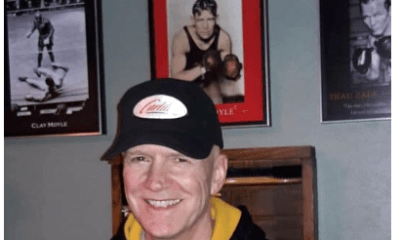
 Featured Articles2 weeks ago
Featured Articles2 weeks agoCatching Up with Clay Moyle Who Talks About His Massive Collection of Boxing Books















